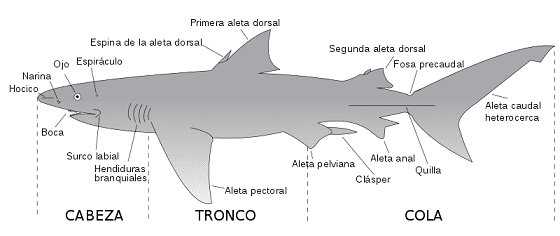Fish Superclass
Fish are aquatic vertebrate animals whose body is made up of the head, trunk and tail.
Fish live in both salt and fresh water, but almost no species can live in both environments (salmon, for example).
Fish are generally ectothermic (cold-blooded) beings, and cannot regulate their body temperature, which varies depending on the temperature of the water in which they live.
The characteristics of the fish are what have allowed them to dominate the aquatic environment:
- Its hydrodynamic shape, with a spindle-shaped body, allows it to move easily in the water.
- They have a lateral line, an organ that allows them to pick up the vibrations of the water.
- They are usually covered by scales.
- The fins allow them to make a continuous movement in the water, and can be of two types:
- Paired fins: pectoral and ventral.
- Unpaired fins: dorsal and caudal (the only one that drives it).
- The skeleton of fish can be of two types:
- Cartilaginous or chondrichthyan fish, such as rays and sharks.
- Bony fish or osteichthyos, such as sardines, tuna, salmon,..., and most fish.
- The way of feeding fish is varied. Most of them are carnivores, and prey on other organisms, but there are also scavengers, parasites, herbivores and microphages (they feed on planktonic beings).
- They breathe through gills, with which they capture dissolved oxygen in the water.

